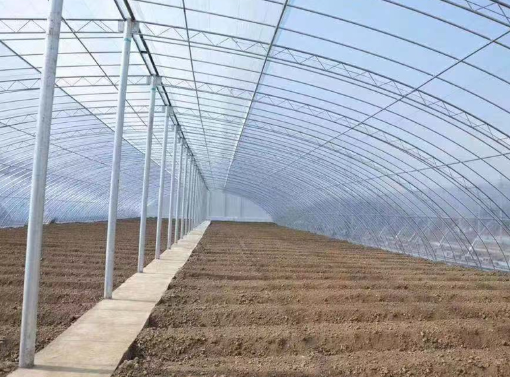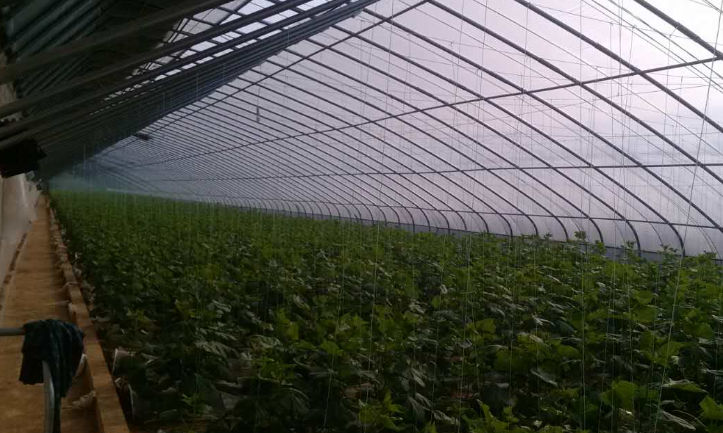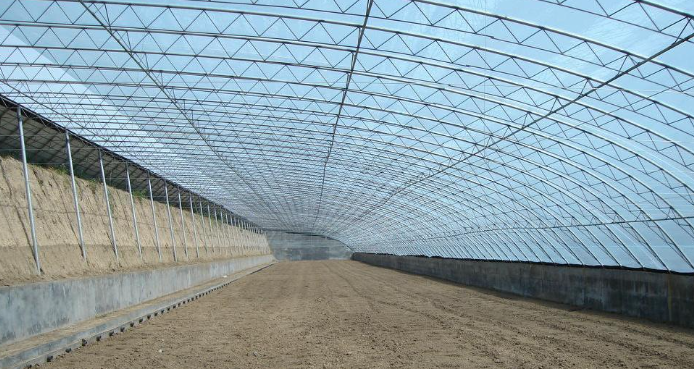Sunken greenhouses, a relatively new concept in agriculture, are gaining attention for their innovative design and ability to optimize energy efficiency. These greenhouses take advantage of the earth’s natural temperature to regulate the internal climate, offering a stable environment for plant growth. Part of or all of the greenhouse structure is built underground, utilizing the earth’s consistent temperature to create ideal conditions for cultivation, especially in cold climates.
Advantages of Sunken Greenhouses
1. Stable Temperature
One of the primary benefits of a sunken greenhouse is its ability to maintain a stable internal temperature. The earth’s temperature fluctuates less than the air above ground, meaning the greenhouse remains warm in winter and cool in summer. This provides a consistent growing environment for crops, even in extreme weather conditions.
2. Energy Efficiency
Sunken greenhouses significantly reduce the need for artificial heating. By harnessing the earth’s natural heat, these greenhouses require less energy to maintain a comfortable temperature. In contrast to traditional greenhouses, which often rely on electricity for heating, sunken greenhouses lower energy costs and reduce carbon emissions, making them a more eco-friendly option.

3. Extended Growing Season
The stable temperature inside sunken greenhouses allows crops to grow year-round. Even in the harshest winters, plants can continue to thrive without the threat of frost. This extended growing season is beneficial for farmers, allowing them to produce crops outside of the typical growing periods, thus increasing overall productivity.
4. Resistance to Wind and Weather
Since much of the structure is underground, sunken greenhouses are more resilient to wind and storms. In areas prone to strong winds, traditional greenhouses may be damaged, while sunken greenhouses are less affected due to their underground nature. This added durability makes them ideal for areas with harsh weather conditions.

Challenges of Sunken Greenhouses
1. High Construction Costs
Compared to traditional greenhouses, building a sunken greenhouse can be more expensive. The need to excavate land and construct underground structures increases the overall cost of the project. While the long-term benefits may outweigh the initial investment, the upfront costs can be a barrier for some farmers.
2. Drainage Issues
Proper drainage is crucial in any greenhouse, but it is especially important in sunken greenhouses. If the drainage system is not carefully designed, water can accumulate and damage crops. Factors such as soil quality, underground water levels, and the overall water flow need to be considered in the design process to prevent water-related problems.
3. Space Limitations
The space available in a sunken greenhouse can be limited, particularly in terms of height. In areas where large-scale farming is required, the confined space of a sunken greenhouse may not be sufficient to meet the needs of the farmer. This limitation can reduce the overall feasibility of using sunken greenhouses for large-scale agricultural production.

Welcome to have a further discussion with us.
Email:info@cfgreenhouse.com
Phone:(0086)13980608118
Ideal Locations for Sunken Greenhouses
Sunken greenhouses are best suited for regions with colder climates. By taking advantage of the earth’s natural temperature regulation, these greenhouses create a stable growing environment for plants, even in harsh winter conditions. They are particularly effective in areas where heating costs for traditional greenhouses would be prohibitively expensive.
Chengfei Greenhouse’s Sunken Greenhouse Solutions
At Chengfei Greenhouse, we specialize in providing energy-efficient greenhouse solutions tailored to the specific needs of our clients. With years of experience in designing and building sunken greenhouses, we offer customized solutions that take into account local climate conditions, the type of crops being grown, and the available land.
Our sunken greenhouses provide a controlled environment for year-round cultivation, reduce energy costs, and extend the growing season. By minimizing energy consumption and optimizing the use of natural resources, Chengfei Greenhouse’s solutions contribute to sustainable agriculture practices.
Post time: Apr-11-2025







 Click to Chat
Click to Chat